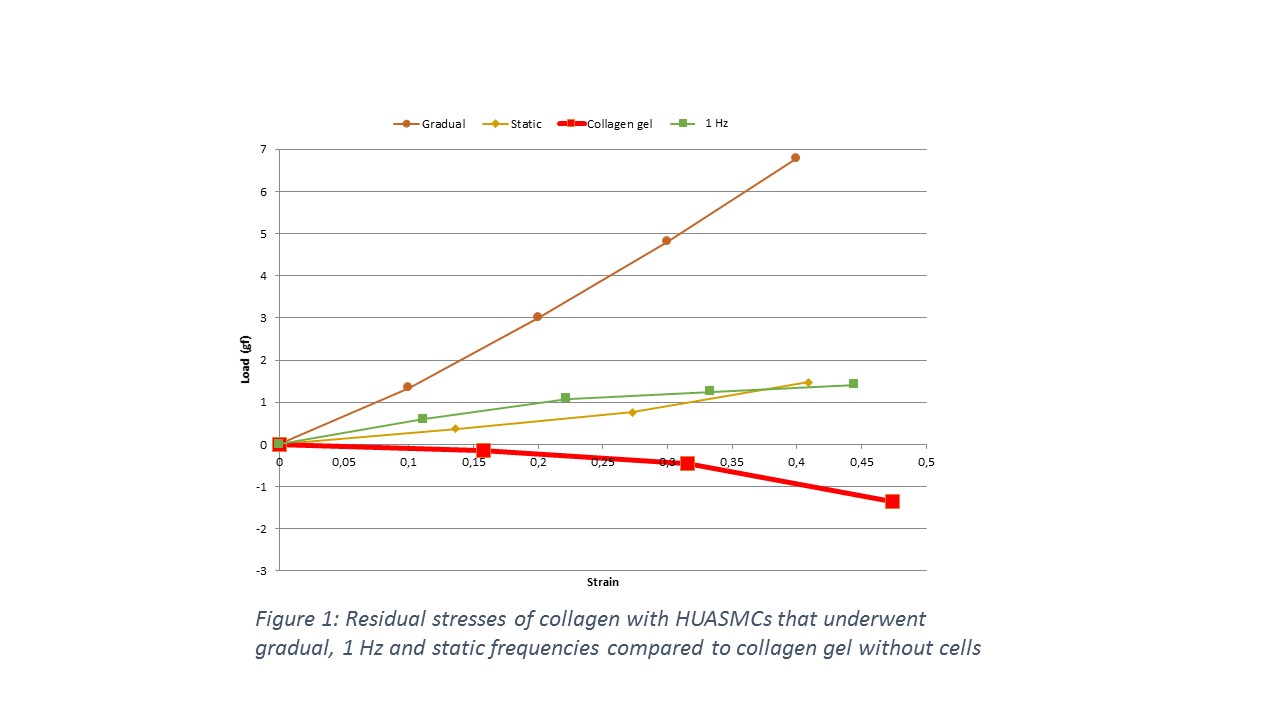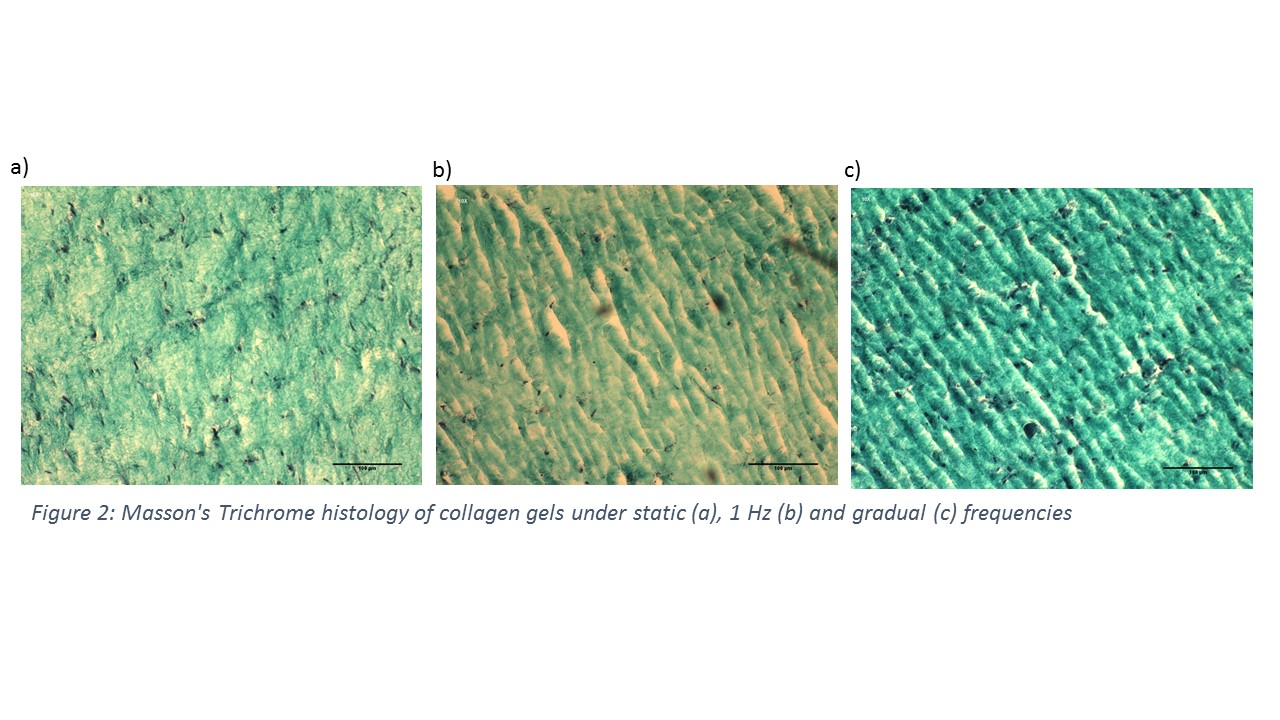Introduction: In vascular tissue engineering, the understanding of cells behavior inside matrices and under pseudo-physiological treatment is of upmost importance in order to develop arteries and arterial wall models. Indeed, extracted collagen has low mechanical properties and is unable to withstand physiological pressure. Cells has the ability to remodel the collagen thus leading to reinforcement of the matrix. Moreover, they are able to produce their own matrix. It has been also shown that cells alone behave differently under different frequencies[1]. However, little has been studied on cells within matrices and their behavior under diverse frequencies. Therefore, the aim of this work was to investigate the effect of the frequency of a dynamical strain applied to collagen based cellularised scaffolds.
Materials and Method: HUASMC (5 X 105 cells/ml) were embedded in collagen type 1 gels (4 mg/ml) and moulded into rectangular shape geometry in a 6 wells silicone membrane plate (Flexcell International Corporation, Burlington, NC, USA) as described before[2]. Dynamic 5% strain at 1 Hz and gradual frequency was applied to the samples. The mechanical properties of the samples were assessed by compression relaxation test using a MACH-1 (Biomomentum Inc., Laval, Canada) apparatus. The remodeling and behavior of the cells were assessed by FV-1200 confocal microscopy (Olympus, Richmond Hill, Canada) and histology staining. RT-qPCR will also be used to investigate the production of collagen and elastin and the phenotype of the HUASMCs.
Results and Discussion: Collagen type 1 gels do not show residual stresses when submitted to step-by-step compression relaxation tests. However, the same tests performed on collagen gels colonized with HUASMC and dynamically strained have generated residual stresses (Fig. 1).

Histology confirmed that HUASMCs succeeded in remodelling the collagen matrix. Furthermore, compaction induced by the cells is greater in the gradual frequencies samples than in the 1 Hz and the static samples (Fig. 2).

Hence, cells densify the collagen network by adhering to the collagen fibers and exerting traction forces. An alignment in the direction of the strain of the HUASMCs within the collagen gels was also observed by both the histology and the confocal microscopy images. However, the alignment seems less pronounce with gradual frequencies. A greater remodeling of dynamic strain samples seems to be shown by the RT-qPCR analyses as well as the production of collagen and elastin.
Conclusion: In this work, it was shown that the frequency applied to 3D collagen matrices with embedded cells influences cell behavior in the remodeling of the construct. The investigation have shown that physiological (1Hz) frequency seems to show better elastic modulus, a greater alignment of the cells and adequate phenotype for the remodeling of the matrix and the production of extracellular matrix.
This work was partially supported by NSERC-Canada, CIHR-Canada, CFI-Canada, FRQ-NT-Quebec, and MRI-Quebec.
References:
[1] Liu, B., et al., Role of cyclic strain frequency in regulating the alignment of vascular smooth muscle cells in vitro. Biophysical journal, 2008. 94(4): p. 1497-1507.
[2] Levesque, L. and D. Mantovani, The Effect of Dynamical Strain on the Maturation of Collagen-Based Cell-Containing Scaffolds for Vascular Tissue Engineering. Advanced Materials Research, 2012. 409: p. 152-157.